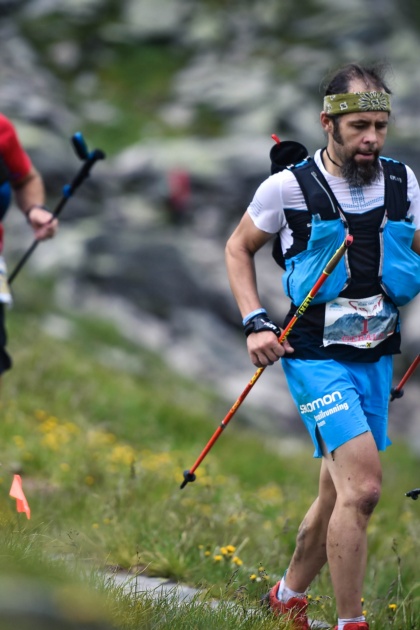
Interview with Gerald Fister
Gerald Sancho Fister was able to impressively defend his victory from last year at the Grossglockner Ultra Trail with a new track record where he won the race neck and neck with Klaus Gössweiner.
You can still feel the 110 kilometres with 6500 metres difference in altitude in your bones. What were the greatest challenges you had to overcome this year on the way to winning the title? (Route, strength, food and drink, equipment, competitors, etc.).
I suffered a slight injury in the run-up to the race, which is why I stood at the starting line in pain. It was therefore uncertain whether I would make it to the finish at all. Added to this was the pressure to defend the title. It is definitely easier to win a race than to defend a title. Here, I am especially thinking of the expectations of others. For my part, I always try not to put myself under any pressure.
The race went pleasingly well and the pain was not noticeable. However, the competitors’ starting pace was very fast. I tried to follow suit but it was too much for me. I eventually put the brakes on and decided to run at my own pace. That was ultimately the key to success because I had plenty of reserves for the final part.
Such a challenge cannot be overcome without the proper training. Can you explain to us what it requires and how you prepared?
I work a perfectly normal 40-hour week and run in the evening. I usually run for 3 hours during the week and 5 to 6 hours at the weekends, which always encompasses many metres difference in altitude. I also go on regular bike tours, which give me a lot of power. On Mondays, I enjoy a day of rest. My goal is to always be fit. This means I can always register for races at short notice and perform successfully.
I run intensively once a week. I believe this to be a very decisive element, especially for ultra runners. For example, I try to tackle 1500 metres in altitude difference as fast as possible. I never actually run on the flats. You’ll always find me running uphill and downhill. But I’m careful going downhill due to the risk of injury.
More and more runners are toying with the idea of running an ultra. What are your three most important tips to make it work out for them?
- Take a slow approach and don’t expect too much from your body. It takes years before you can run the long distances with ease.
- From a nutritional standpoint, try out everything during training and only consume what has already been tried and tested in the race itself. Basically, the following applies: No experiments during the race!
- The head must be free. By no means let other people hustle you, instead have fun taking part and stay relaxed.
During an ultra-marathon, refueling plays an important, even decisive role. What does your refueling plan look like for a race like the Grossglockner Ultra Trail?
I have no strict schedule that I follow. I drink or eat when I am thirsty or hungry. I always carry a bottle of water and a coke with me, as well as muesli bars and salt tablets.
I do everything alone and have no mentor or coach with me. I fill up the bottles again at the refreshment stations and usually change my shoes and socks at half time. At the half-time mark, I also have a reserve of fluids (water, coke, RedBull) and food (bars) ready and waiting for me.
Do you have a secret tip you would be willing to share with us? With regards to key training, nutrition or technique, for example?
Put your heart into it and then it will turn out well. Don’t let yourself be led by others too much. And make core stability and balance training an integral part of your training.
Foto: ZVG
Many thanks to Gerald Fister for the interesting answers.
This may be of interest for you too


